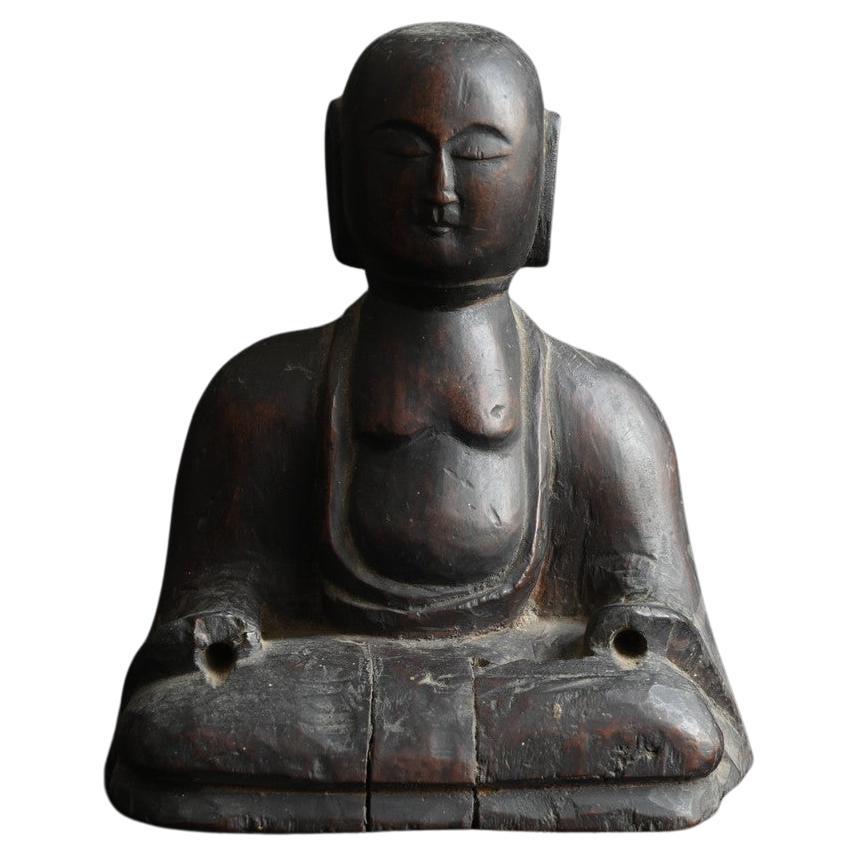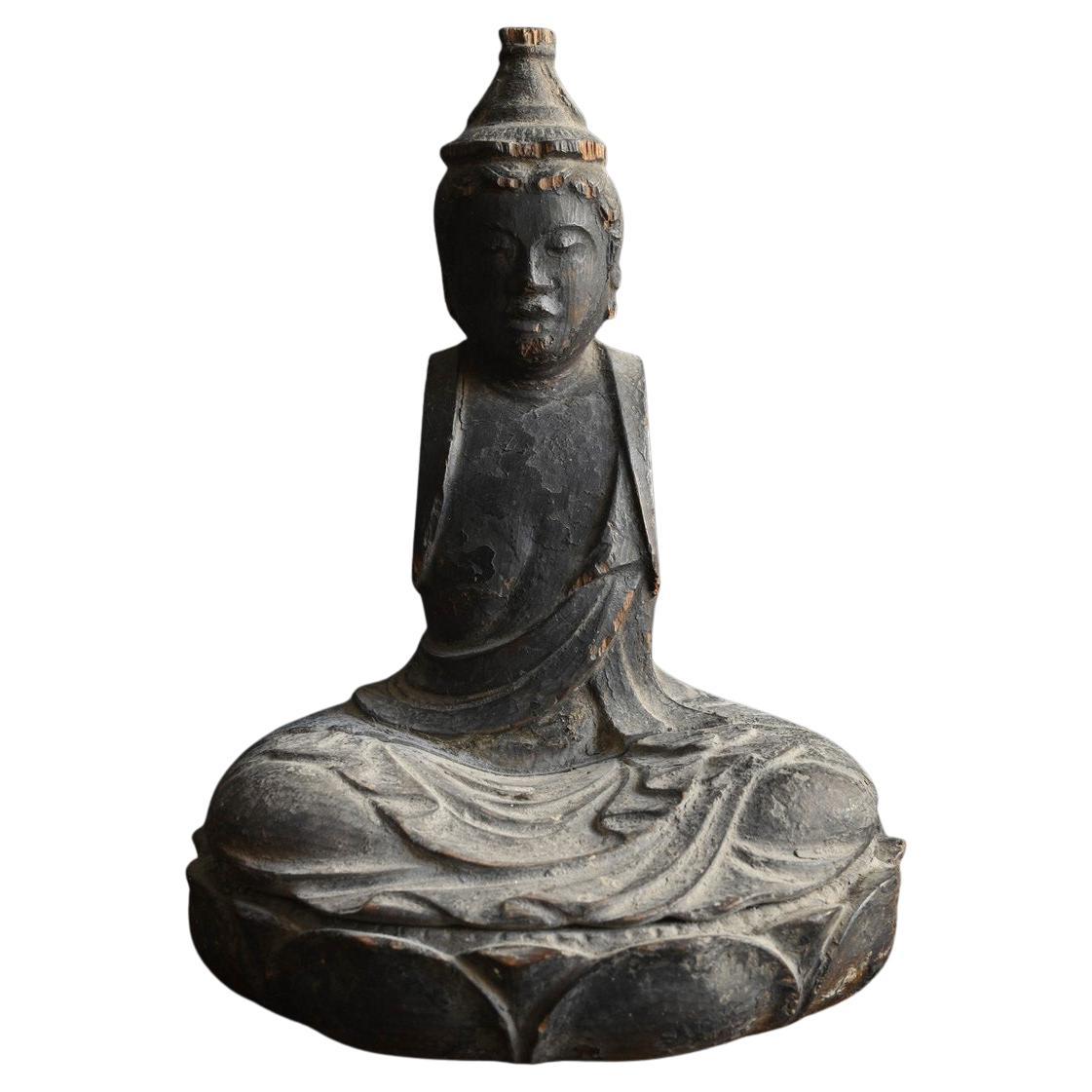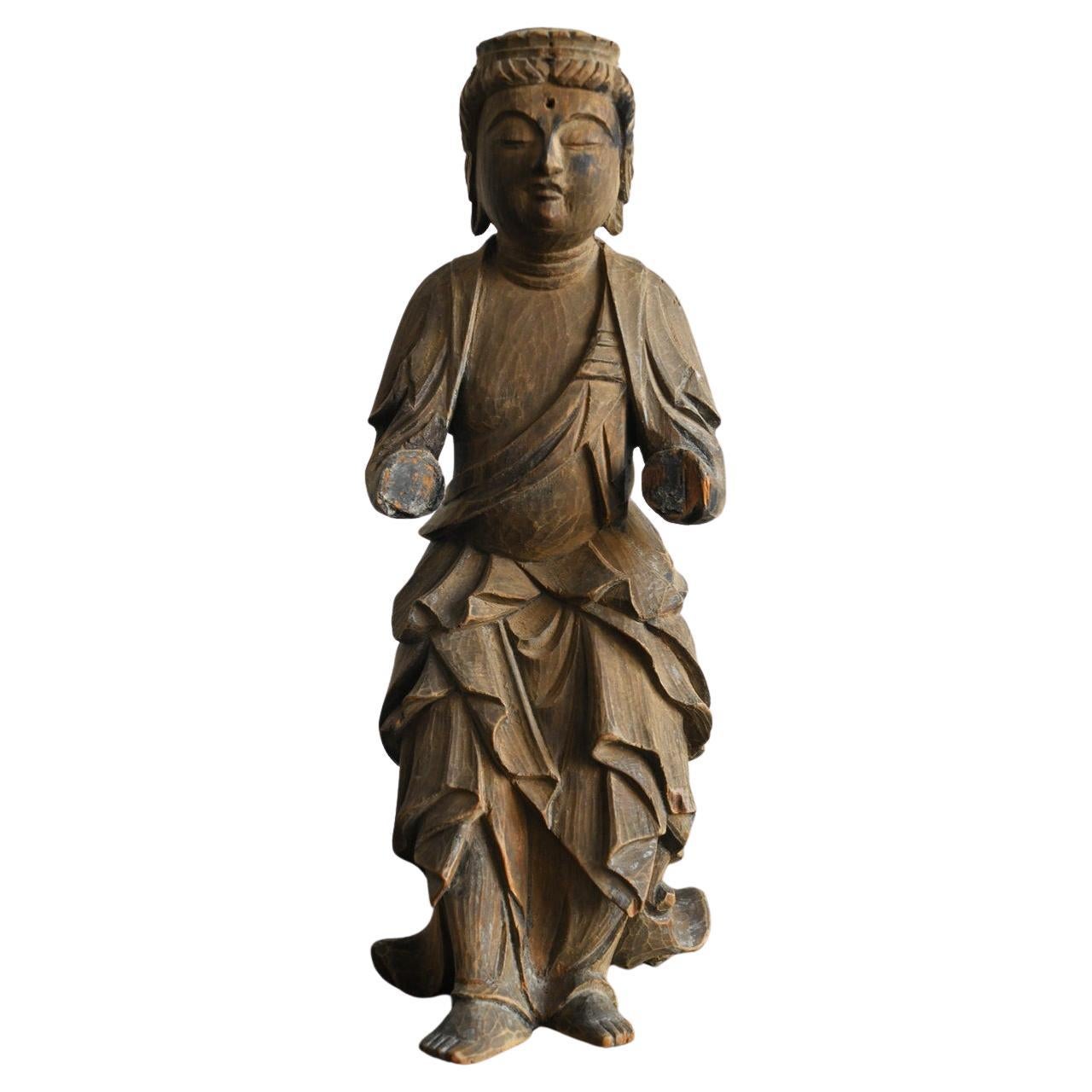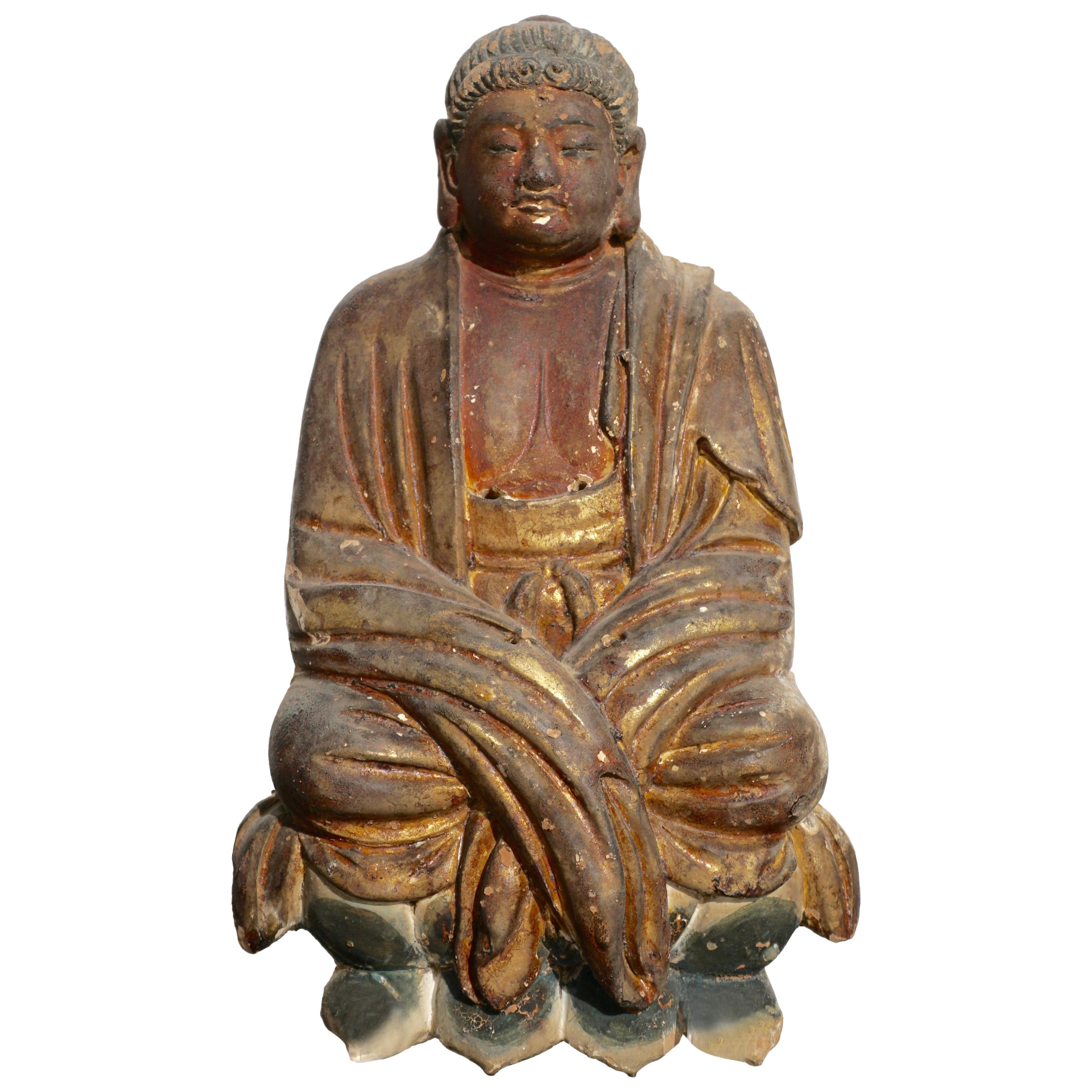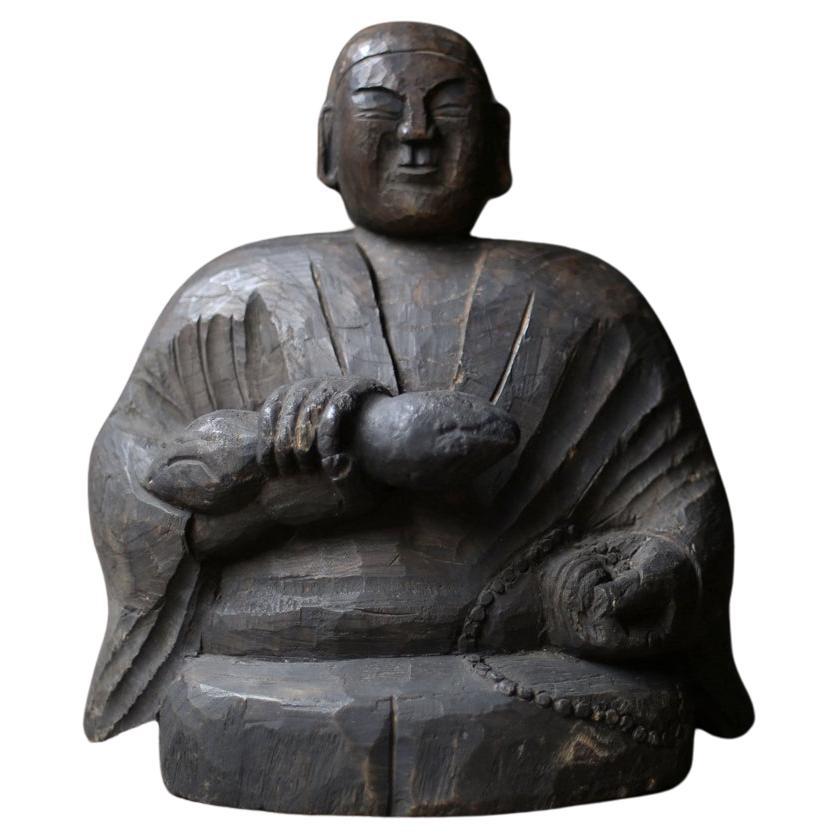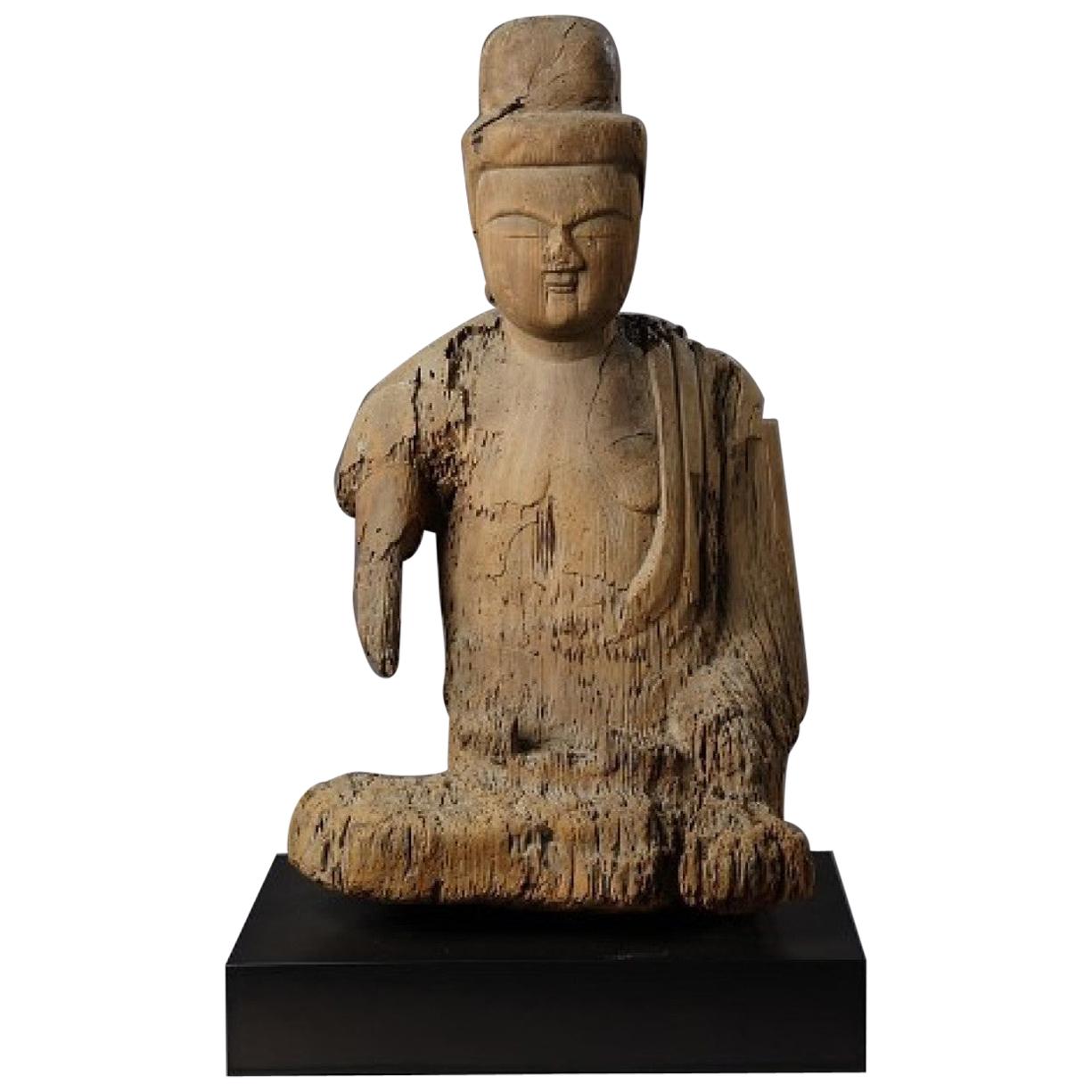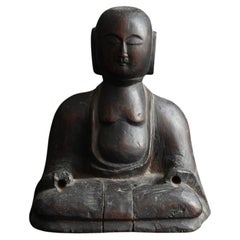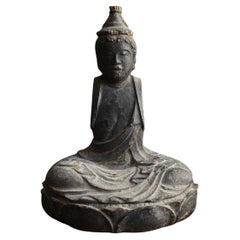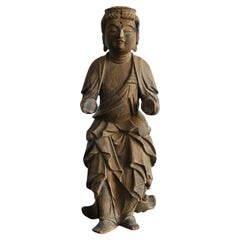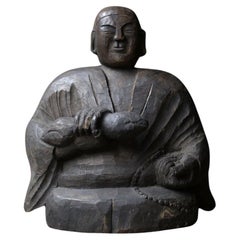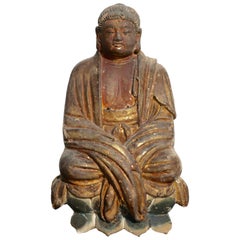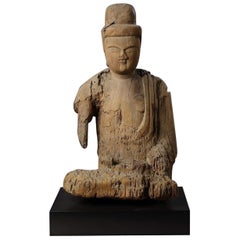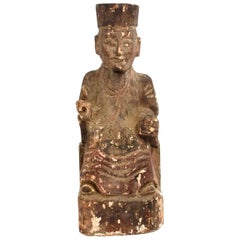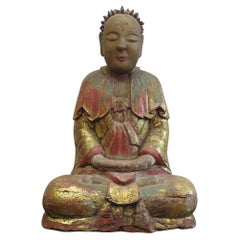Items Similar to Rare Japanese antique wooden god statue /12th century/small wabi-sabi figurines
Want more images or videos?
Request additional images or videos from the seller
1 of 20
Rare Japanese antique wooden god statue /12th century/small wabi-sabi figurines
$1,500
£1,138.77
€1,302.52
CA$2,095.72
A$2,330.90
CHF 1,217.12
MX$28,364.52
NOK 15,544.49
SEK 14,577.99
DKK 9,721.17
Shipping
Retrieving quote...The 1stDibs Promise:
Authenticity Guarantee,
Money-Back Guarantee,
24-Hour Cancellation
About the Item
I was able to obtain a very rare item.
This is a sculpture of the god ``Shinzo''.
"Shin" = God
"zo" = statue
Since ancient times in Japan, it has been believed that gods reside in all things in the universe, and there have been many shrines.
In the 6th century, Buddhism was introduced and gradually spread throughout Japan.
Around the 8th century, the idea that gods follow the teachings of Buddha spread.
Until the Edo period, God and Buddha became one and the idea of ``Shinto and Buddhism syncretism'' was established.
This statue was created during such a history.
Originally, the image of God was invisible and could not be understood as something tangible.
However, with the introduction of Buddhism to Japan, idol worship was also introduced, and the idea that the gods follow the teachings of Buddha was also propagated at the same time in order to spread the teachings of Buddhism.
Around that time, around the 9th century, the first statues of gods were built in Japan.
The shape was much simpler and simpler than that of a Buddhist statue.
Most statues of gods are made with both hands in front of the chest, as if praying. (Please see the reference image.)
A characteristic of divine statues is that they are often sculpted as a male and female pair.
The women wear Chinese-style kimonos (or Japanese kimonos), and the men wear hats and dress like Japanese aristocrats of the time.
This statue is thought to have been made around the 12th century.
The time is the end of the Heian period.
(Heian period, 9th century to 12th century)
This is a female statue.
I'm letting my hair down.
All carved from one block of wood.
However, it is thought that a different material was inserted into her right hand.
The knees are not protruding compared to the Buddha statue.
There are also statues of deities that do not emphasize the feet too much and omit them.
These points are the characteristics of a divine statue.
Also, because the sleeves have a unique design, the kimono is probably a Chinese-style design.
Also, a woman's kimono usually covers her skin up to her neck. However, regarding this statue, the skin is visible up to the stomach area.
This is thought to imitate the appearance of the Tathagata Buddha in Buddhism.
Some of the statues have a mixture of designs from Buddhist art and divine statue art.
A similar influence can be seen in this statue as well.
I found a statue of a god with a similar design in an art book, so I'll include it here.
Sculptures from this period are extremely rare.
A dedicated storage box is also included.
Although it is very small, it is an attractive statue with a strong presence.
it's recommended.
Weight: 78g
There are very few stores in 1stdibs that sell this kind of stuff.
We sell with confidence.
Also, I want many people to know the goodness of antiques, so I set the price reasonably.
How about showing off to your friends around you?
- Dimensions:Height: 5.36 in (13.6 cm)Width: 3.94 in (10 cm)Depth: 2.13 in (5.4 cm)
- Style:Other (Of the Period)
- Materials and Techniques:
- Place of Origin:
- Period:
- Date of Manufacture:12th century
- Condition:
- Seller Location:Sammu-shi, JP
- Reference Number:1stDibs: LU5487238107242
About the Seller
5.0
Gold Seller
Premium sellers maintaining a 4.3+ rating and 24-hour response times
Established in 2015
1stDibs seller since 2020
1,602 sales on 1stDibs
Typical response time: 5 hours
- ShippingRetrieving quote...Shipping from: senzoku, Japan
- Return Policy
Authenticity Guarantee
In the unlikely event there’s an issue with an item’s authenticity, contact us within 1 year for a full refund. DetailsMoney-Back Guarantee
If your item is not as described, is damaged in transit, or does not arrive, contact us within 7 days for a full refund. Details24-Hour Cancellation
You have a 24-hour grace period in which to reconsider your purchase, with no questions asked.Vetted Professional Sellers
Our world-class sellers must adhere to strict standards for service and quality, maintaining the integrity of our listings.Price-Match Guarantee
If you find that a seller listed the same item for a lower price elsewhere, we’ll match it.Trusted Global Delivery
Our best-in-class carrier network provides specialized shipping options worldwide, including custom delivery.More From This Seller
View AllJapanese antique wood carved Buddha/1800s/late Edo period/folk Buddha
Located in Sammu-shi, Chiba
This is a wooden Jizo Bodhisattva statue made in the late Edo period in Japan.
It is thought that they were not carved by Buddhist sculptors living in central cities such as Kyoto or...
Category
Antique 19th Century Japanese Edo Figurative Sculptures
Materials
Cypress
Japanese antique wooden Buddha statue / Edo period / 1600 to 1800
Located in Sammu-shi, Chiba
This wooden statue is a relic from Japan's Edo period, and within it lies a deep history that transcends time. Originally, it was part of a more intricate statue, likely adorned with...
Category
Antique 17th Century Japanese Edo Sculptures and Carvings
Materials
Cypress
Small wooden Buddha statue from the Edo period in Japan/17th to 19th century
Located in Sammu-shi, Chiba
We are pleased to present a small wood carving of a flanking Bodhisattva made around the Edo period.
This work is thought to be one of the Kannon ...
Category
Antique 18th Century Japanese Edo Figurative Sculptures
Materials
Cypress
Antique Wooden Sculpture "Kobo Daishi" / Buddha Statues / Edo-Meiji Period
Located in Sammu-shi, Chiba
This is an old Japanese "Kobo Daishi" wooden figure.
"Kobo Daishi" means "Kukai".
"Kukai" was a monk from the early Heian period. His posthumous name was "Kobo Daishi". He is the fou...
Category
Antique 19th Century Japanese Edo Sculptures and Carvings
Materials
Cypress
Wooden Buddha statues from the Edo period in Japan/1800-1868/Late Edo period
Located in Sammu-shi, Chiba
This wooden Buddhist statue was made in the late to late Edo period.
It is thought to be a statue of Kannon Bodhisattva.
It was originally placed in a shrine and was painted, but the...
Category
Antique 19th Century Japanese Edo Sculptures and Carvings
Materials
Cypress
Japanese bone head wooden small Buddha statue/Benzaiten/Muromachi to Edo period
Located in Sammu-shi, Chiba
This is a wooden statue of Benzaiten, one of the Seven Gods of Good Fortune, believed to have been made in Japan between the late Muromachi period and the mid-Edo period, from the 16...
Category
Antique Early 17th Century Japanese Edo Sculptures and Carvings
Materials
Cypress
You May Also Like
Early Ming Dynasty Chinese Buddha Statue, circa 14th Century
Located in Dallas, TX
A very fine late Yuan to early Ming Chinese terracotta gilt and polychrome painted Buddha figure, he is dressed in thick robes, his hair arranged in ty...
Category
Antique 15th Century and Earlier Chinese Ming Figurative Sculptures
Materials
Terracotta
Kamakura Period Japanese Shinzu Sculpture
Located in Hudson, NY
Kamakura Period Japanese Shinzu sculpture. Shinzo is a representational figure of a god or spirit in the Shinto religion. This sculpture was carved fro...
Category
Antique 15th Century and Earlier Japanese Antiquities
Materials
Wood
19th Century Taoist Master Wood Statue
Located in Somis, CA
Very old solid wood statue depicts the Taoist Zen Master. He wears typical Tao robe and hat, with two fingers pointing up, and the left hand on his knee. Su...
Category
Antique Early 19th Century Chinese Sculptures and Carvings
Materials
Wood
18th Century Buddha Wooden Statue
Located in New York, NY
18th century Carved Wood Buddha. Chinese antique Buddha Statue of carved wood. Gesso like coating to wooden surface, with pigments and gilding. ...
Category
Antique 1790s Asian Qing Figurative Sculptures
Materials
Wood, Giltwood
$3,840 Sale Price
20% Off
Antique Japanese Carved Village Buddha Enku Style
Located in Atlanta, GA
A carved wood buddha with lacquered surface in the style of Erku (1632–1695), a monk from Edo period who was famous for hand-carving Buddha statues in a primitive style. From a single wood block of what appears to be cedar, the standing buddha was carved in an unpolished manner with exposed knife strokes that effectively depicted a subtly smiling face and the folding of the cascading robes. The rustic style is full of Mingei charm being a great example of Japanese Buddhism...
Category
Antique 18th Century Japanese Edo Sculptures and Carvings
Materials
Wood
18th Century Chinese Wooden Figure 'Wanli'
Located in Esbeek, NL
18th century Chinese wooden figure, depicted Wanli.
See old sticker on the back of the figure, see picture.
Category
Antique 18th Century Chinese Sculptures and Carvings
Materials
Wood
More Ways To Browse
12th Century
Wabi Sabi Object
6th Century
12th Century Furniture
Antique Cypress
Japanese Wood Block
Antique Japanese Book
Antique Cypress Furniture
Wabi Sabi Sculpture
Antique Wooden Blocks
Antique Chinese Figurines
Figurines Japan
Antique Men Hats
Small Japanese Chest
Wood Female Statue
Chinese Wood Carved Chest
Antique Wood Figurines
Buddha With Hair
